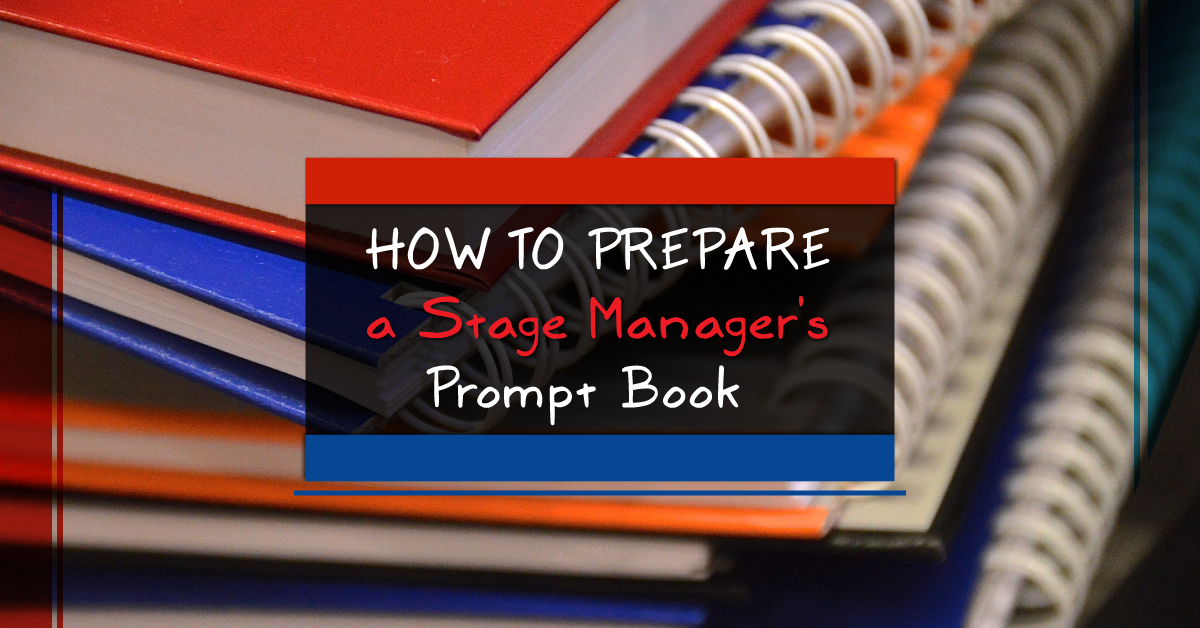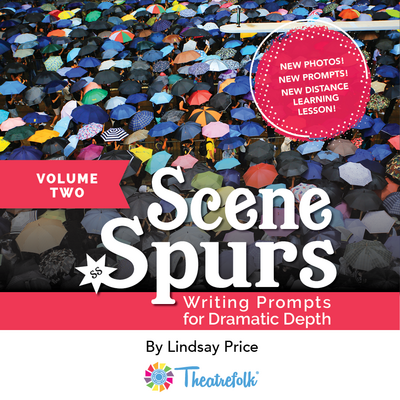How to Prepare a Stage Manager’s Prompt Book
One of the stage manager’s most important tasks is to create and maintain the prompt book – sometimes known as the “show bible” – which is a master copy of the script and contains everything pertaining to the show. The prompt book contains blocking notes, any changes that have been made, and all technical cues, in a neat and easy-to-read style. The prompt book is kept in such a manner that in the case of an emergency anyone could pick up the book and run the show. Stage managers also use this master script it contains to prompt actors if they forget lines during rehearsal. In a high school setting, the stage manager role is frequently taken on by an organized, hard-working senior student and is a vital part of the artistic team.
A prompt book isn’t just a random extra copy of the script though. The prompt book must be prepared in advance of the first rehearsal, so the stage manager is ready to go right away. But fear not – making a prompt script is easy. It just takes a little bit of time! Follow these steps and your stage manager will be ready to go in no time.
A note before starting: Remember that every stage manager is different, and may have a different way of preparing and organizing their prompt book. The method below is how I was taught and have prepared prompt books in the past, but other stage managers may have different methods. However, I believe that as long as the stage manager can run their show effectively using it, then they have done their job!
Materials Needed:
- A copy of the script
- A large three-ring binder
- A three-hole punch
- Post-it tabs
- Binder divider sheets
- Pencils
Steps:
Make a single-sided copy of the script. Depending on the size of the pages, you may want to enlarge the text so it fills the full page to make it easier to read. However, some stage managers prefer to leave wide margins around the script so they can make additional notes. Make sure that the page number is included in your copy and that it is the same as on the actors’ copies of the script.
Hole-punch the pages and put them into a large three-ring binder. Most stage managers will actually hole-punch the pages on the “wrong” side (down the right side of the page) so that they have the script on the left side of the binder and a blank page for making notes on the right side. Left-handed stage managers tend to prefer the opposite layout as it’s easier for them to write that way. The blank pages can then be used to write blocking notes, write down cues, or even make ground plan drawings (a bird’s eye view of the stage and set) to indicate actor positions and movements, entrances/exits, and where set pieces go.
Using post-it tabs, mark each scene along the margin of the correct page and write the act and scene number on the tab. This way, the stage manager can flip to the correct act and scene quickly, without having to turn pages upon pages to get there. Some great stage managers I’ve seen go a step further when they’re working on musicals, using one colour of tabs down the long side of the page to indicate scenes, and a second colour of tabs along the top of the page to indicate songs. It makes their lives much easier!
For even more ease, many stage managers will go scene-by-scene and number each line. This way, when the stage manager wants to make a note (a technical cue, movement, etc.) on the opposite page, they can indicate what line the note is associated with, without having to write out the full line. Always make sure all notes are written in PENCIL because there will be changes!
Use divider sheets to make sections for the script, score (if the show is a musical), company information (such as contact lists, attendance lists, casting lists), copies of any handouts given during rehearsals, and any other sections needed.
Exercise:
- Following the directions above and using the included script pages in the download below, students create and submit their own miniature prompt book.
- As an added challenge, have students include their own blocking notes to their prompt script.
- Students will also complete and submit a Reflection with their prompt book.
Related Articles
Scene Spurs - Writing Prompts for Dramatic Depth
by Lindsay Price
Scene Spurs is a collection of photo-based writing prompts developed by playwright Lindsay Price. The set includes 35 different Spurs along with an instruction guide to integrate them into your drama classroom.
Scene Spurs: Writing Prompts for Dramatic Depth Volume Two
by Lindsay Price
35 more photo-based writing prompts developed by playwright Lindsay Price. Includes an instruction guide and tips to integrate them into a distance learning curriculum.





